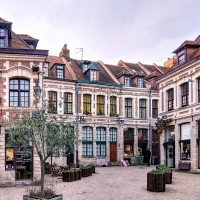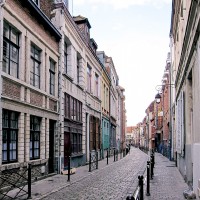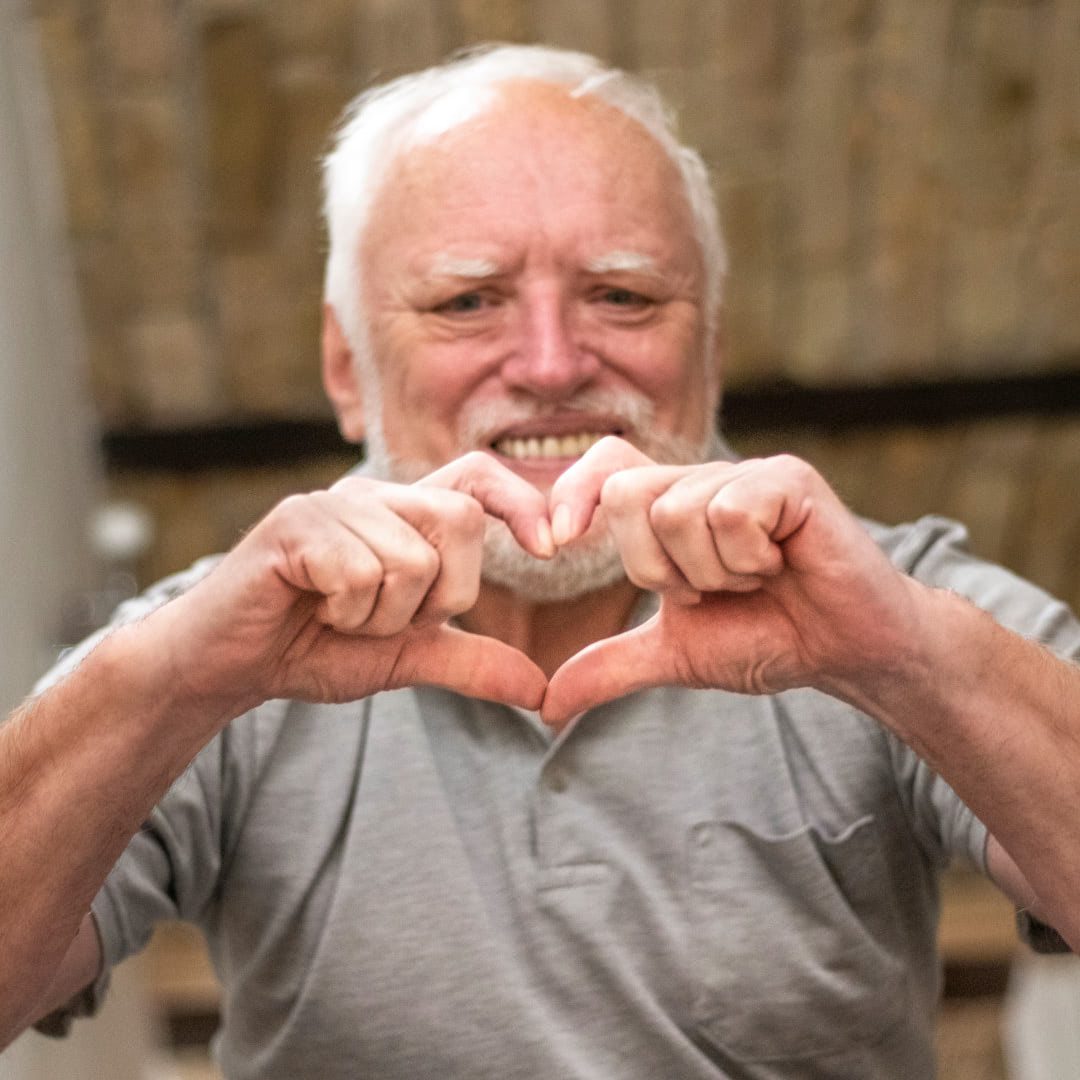How to visit Lille in 2 days?
Where to sleep?
If you're looking for a nice place to sleep, we recommend the Old Lille. That's where you'll find cobbled streets, historical buildings and cosy little restaurants. If you're looking for a quieter place to stay, the Wazemmes district is also cool: it's the Bohemian district of Lille. You'll find plenty of typical bars, a well-developed nightlife and even a market on Tuesday, Thursday and Sunday morning!
Some addresses?
L'Hermitage Gantois Autograph Collection: a 5-star hotel located in a magnificent historic building that offers elegant and luxurious rooms as well as a spa and a gourmet restaurant.
Clarance Hotel Lille: a 5-star boutique hotel in Old Lille, housed in an 18th century mansion.
Mama Shelter Lille: This trendy design hotel offers original and colourful rooms as well as a trendy bar and restaurant.
L'Arbre Voyageur: a very special design hotel, at the entrance of the Old Lille. It is in fact the former Polish consulate that has become a hotel with 48 rooms.
Eklo Lille: an eco-hotel, a kind of youth hostel for young people but not only! The aim here is to vary the generations by offering rooms at low prices for groups of friends or families.
Where to eat?
Well, let's not lie, Lille's cuisine is not light-light. But it's so good that it doesn't matter! If you're here in winter, you absolutely must try the carbonnade flamande, a stew made with meat, beer and onions. Otherwise, there's the welsh, a kind of croque-monsieur with melted cheddar and beer, which you can find in any brewery. If you have a sweet tooth, the cramique is a traditional brioche bread and the Merveilleux, a small meringue cake, are a must. For restaurants, there are plenty in the Old Town, but you can also go to the Rue de Gand.
Some addresses?
Bloempot and Bierbuik: A restaurant and an estaminet, both run by chef Florent Ladeyn. "The cuisine is rooted in the land and is made only with local products from organic or wild farming."
La Clairiere: "homemade and seasonal cuisine" - Located on Boulevard de la Liberté, this is the place to be for veggies.
Le Britney : tapas to share, mixing Asian influences with classic French cuisine.
Canard Street: in Wazemmes, "Canard Street revisits and modernises duck in original forms such as burgers, crisps or tartars."
La Bellezza: Italian restaurant of the Big Mamma group, they offer fresh and 100% home-made dishes (slight preference for the truffle pasta!). All this accompanied by a good Spritz in a super beautiful place full of style.
What to visit?
Well, there are plenty of options. But for two days, we would advise you to take a little stroll in the Old Town, passing by the Grand-Place and the Vieille Bourse. Then you can go and see the Notre-Dame-de-la-Treille Cathedral and the Palais des Beaux-Arts, which have some amazing collections. If you have time, you can go to the Parc de la Citadelle or the Piscine de Roubaix, which are also cool. And if you're here in September, you can go to the Braderie de Lille, a huge flea market where you'll find everything you're looking for, and even things you weren't looking for.
Visiting Lille on foot
Lille is one of the most welcoming cities in France. We invite you to discover it in a different way, on foot of course, through one (or several) urban escape game(s) in Lille.
Using your smartphone and the Coddy application, you will be guided through the city. It will be a wander punctuated by riddles to solve, mysteries to uncover, which will allow you to get to the bottom of things, to see what the capital of Flanders hides around the corner of a street or a building. In a word, you will live an unusual but fascinating experience, and maybe afterwards, Lille will have no more secrets for you. You will no longer be a simple visitor strolling through the streets, rediscovering the different districts of the city, but you will become an adventurer, a quest hero! This is the promise of urban escape games!
The monuments or buildings that you must see in Lille
The Vieille Bourse: This magnificent 17th century building is a spectacular example of Flemish Renaissance architecture and now houses bookshops and shops.
Notre-Dame-de-la-Treille Cathedral: This modern cathedral, built in the late 20th century, is a fascinating example of contemporary architecture.
The Hospice Comtesse: This historic building, founded in the 13th century, is a magnificent example of Flemish Gothic architecture and now houses a museum.
The Citadelle of Lille: This 17th century military fort is an important historical site and a pleasant place to walk around.
The Lille Opera House: This majestic building, built in the 19th century in a neo-classical style, is an important venue for the city.
The Belfry of the Town Hall: This 104-metre high medieval tower is an emblematic symbol of Lille and offers a breathtaking view of the city.
The Lille-Flandres train station: This 19th century station is a remarkable example of French railway architecture.
The Porte de Paris: This triumphal arch, built in the 19th century, is a symbol of the city of Lille.
The Saint-Maurice Church: This 17th century church is a magnificent example of Flemish Baroque architecture.
The Tower of Lille: This modern skyscraper of 120 meters high is the highest building in Lille and offers a breathtaking view of the city and its surroundings.
The must-sees in Lille
Vieux-Lille: This historic district is famous for its cobbled streets, brick houses, churches and historic buildings.
The Grand-Place: This large square is the centre of the city, surrounded by historic buildings such as the Vieille Bourse and the town hall.
The Palais des Beaux-Arts: This museum is one of the largest in France and houses an impressive collection of European art from the Renaissance to the 20th century.
Notre-Dame-de-la-Treille Cathedral: This magnificent cathedral was completed in 1999 and is considered one of the most remarkable buildings in Lille.
Parc de la Citadelle: This large park is a popular place of relaxation for the inhabitants of Lille and offers a magnificent view of the city.
Visit the Musée de la Piscine in Roubaix: The museum is located in a former Art Deco swimming pool and houses an impressive collection of art and sculpture.
Gare Saint-Sauveur: This former railway station has been renovated and transformed into a cultural space with exhibitions, events and concerts throughout the year.
La Braderie de Lille: This annual festival is one of the most popular events in the city, with thousands of stalls selling everything from food to clothes to antiques.
Lille's culinary specialities: The city is famous for its traditional dishes such as welsh, Flemish carbonnade and moules-frites.
Lille's nightlife: The city is full of lively bars, pubs and clubs, offering an unforgettable nightlife experience.
Go to the Wazemmes market: The market is one of the largest and most popular in the city, with a variety of fresh, local produce.
Attend a football match at the Pierre-Mauroy stadium: The stadium is one of the largest and most modern in France and is home to the football club LOSC Lille.
Take a walk along the Deûle: The river offers beautiful scenery and numerous hiking and cycling trails.
Discover all this during an Urban Escape Game: go on an adventure with your family, friends or colleagues for a highly original and fun (re)visit of the city! Solve all the riddles proposed in the city centre of Lille and have fun during this "guided tour" like no other!












